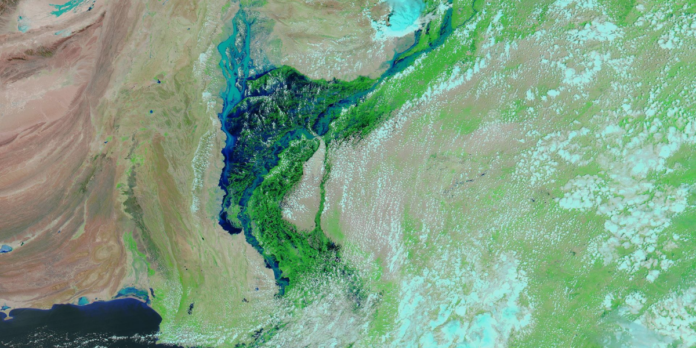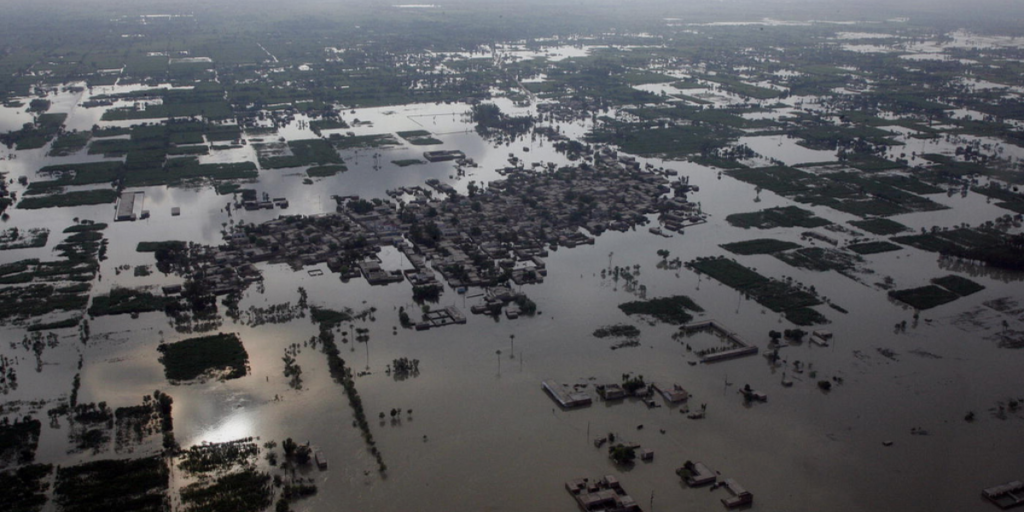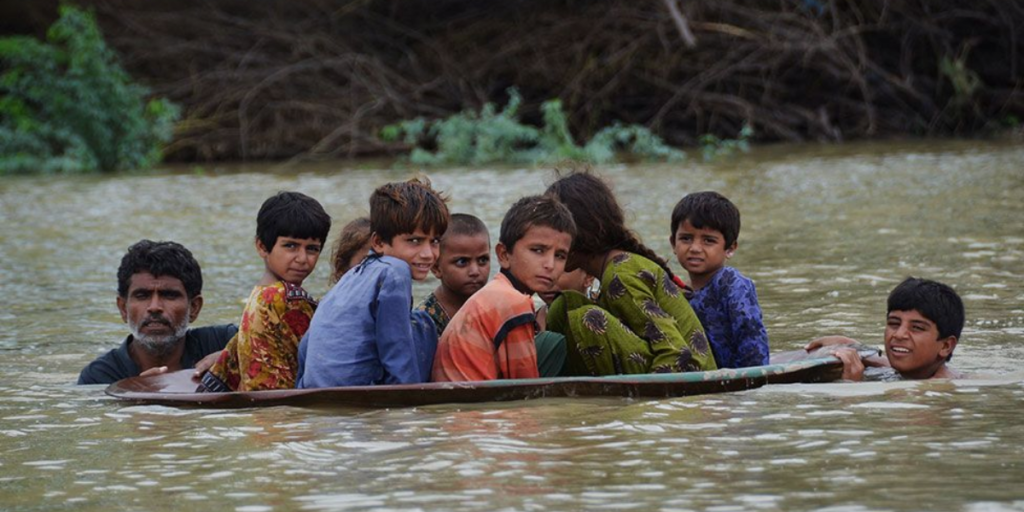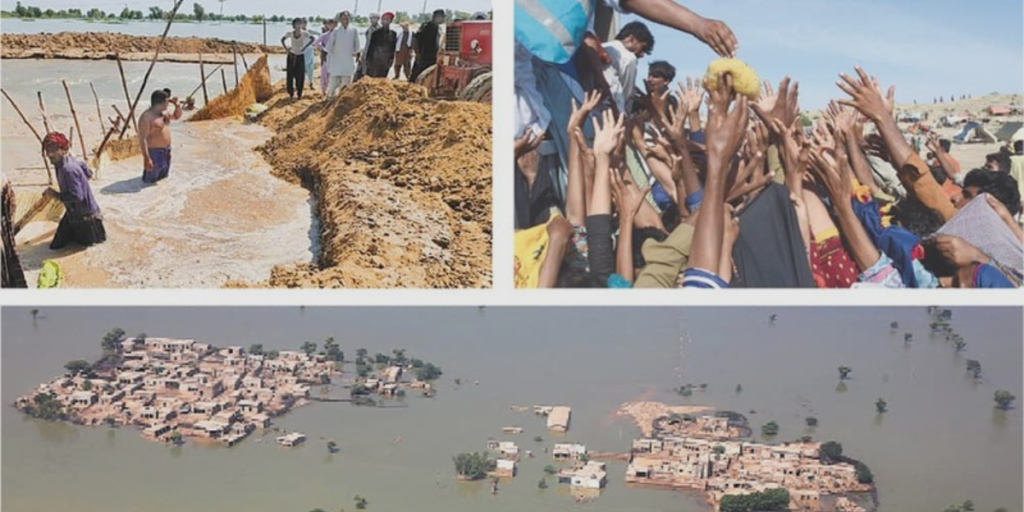In the summer of 2010, Pakistan faced one of the most devastating natural disasters in its history. The Pakistan floods, triggered by unusually heavy monsoon rains, affected an estimated 20 million people, claimed over 1,700 lives, and caused economic damages exceeding $43 billion. The scale of the disaster was such that it submerged about one-fifth of Pakistan’s total land area, affecting every province and causing widespread destruction of homes, infrastructure, and agricultural land.
The Onset and Spread of the Floods
The deluge began in late July 2010, primarily affecting the northern regions of Khyber Pakhtunkhwa (KP) and Gilgit-Baltistan. These areas experienced torrential rains that resulted in flash floods, washing away entire villages and severing communication lines. As the swollen rivers flowed southward, the Indus River, Pakistan’s main waterway became dangerously engorged, spreading the floodwaters to the densely populated provinces of Punjab and Sindh.
The Indus River basin, which stretches over much of Pakistan, became a vast expanse of water. Towns and villages along the riverbanks were submerged, displacing millions. The inundation extended over thousands of square kilometers, creating what was described by the United Nations as a “slow-moving tsunami.”
Human and Economic Impact
The human toll of the floods was staggering. Over 1,700 people lost their lives, and millions were left homeless. The disaster impacted around 20 million people, more than 10% of Pakistan’s population at the time. The immediate aftermath saw a humanitarian crisis unfold, with urgent needs for food, clean water, shelter, and medical care.
Agriculture, the backbone of Pakistan’s economy, suffered immensely. Approximately 2.2 million hectares of crops were destroyed, including staples such as rice, wheat, and sugarcane. Livestock losses were also significant, further threatening food security in the affected regions. The destruction of crops and farmland had long-term economic repercussions, as many farmers lost their entire livelihoods.
Infrastructure damage was widespread. Roads, bridges, schools, and healthcare facilities were either destroyed or severely damaged. The repair and reconstruction efforts required a massive mobilization of resources and international aid. The economic cost of the floods was estimated to be around $43 billion, a figure that included losses in agricultural production, infrastructure, and private property.
Response and Relief Efforts
The scale of the disaster overwhelmed local and national response mechanisms. The Pakistani government, despite its efforts, struggled to manage the crisis effectively. The military played a crucial role in rescue operations, utilizing helicopters and boats to reach stranded populations and deliver aid. However, the sheer magnitude of the flooding necessitated extensive international assistance.
The United Nations launched a major appeal for aid, and numerous countries and organizations responded with financial and material support. The United States, the United Kingdom, Saudi Arabia, and many other nations contributed substantial amounts of aid. International non-governmental organizations (NGOs) also played a vital role in the relief efforts, providing essential services such as food distribution, medical care, and the construction of temporary shelters.
Challenges in Relief Distribution
The distribution of aid faced numerous challenges. The vast geographical spread of the floods made it difficult to reach all affected areas promptly. Damaged infrastructure further complicated logistics, making it hard to transport supplies to remote regions. Additionally, there were issues related to coordination among various relief agencies and the Pakistani government, sometimes leading to duplication of efforts and gaps in aid delivery.
Corruption and inefficiency also hampered the relief efforts. Reports of mismanagement and misallocation of aid surfaced, undermining trust in the relief process. Despite these challenges, the combined efforts of the Pakistani government, military, and international community helped to alleviate some of the immediate suffering and began the long process of recovery and rebuilding.
Long-term Recovery and Lessons Learned
The recovery from the 2010 floods has been a long and arduous process. Rebuilding homes, schools, and healthcare facilities required sustained investment and effort. The agricultural sector, severely damaged by the floods, took years to recover fully. The disaster highlighted the need for better disaster preparedness and infrastructure resilience in Pakistan.
One of the critical lessons from the 2010 floods is the importance of early warning systems and effective disaster management plans. Improved forecasting and timely warnings can significantly reduce the human and economic toll of such disasters. Additionally, there is a need for robust infrastructure that can withstand extreme weather events, particularly in flood-prone areas.
Community resilience is another crucial factor. Empowering local communities with knowledge and resources to respond to disasters can enhance their ability to cope with and recover from such events. This includes training in emergency response, building flood-resistant housing, and creating local networks for disaster preparedness and recovery.
Conclusion
The 2010 Pakistan floods were a stark reminder of the devastating impact that natural disasters can have on a nation. The extensive human suffering, economic losses, and long-term recovery challenges underscore the need for comprehensive disaster management strategies. While the immediate response highlighted both the strengths and weaknesses of the existing systems, the experience has provided valuable lessons for future preparedness and resilience. Moving forward, Pakistan and the international community must continue to invest in measures that can mitigate the impact of such disasters and support affected communities in rebuilding their lives and livelihoods.





